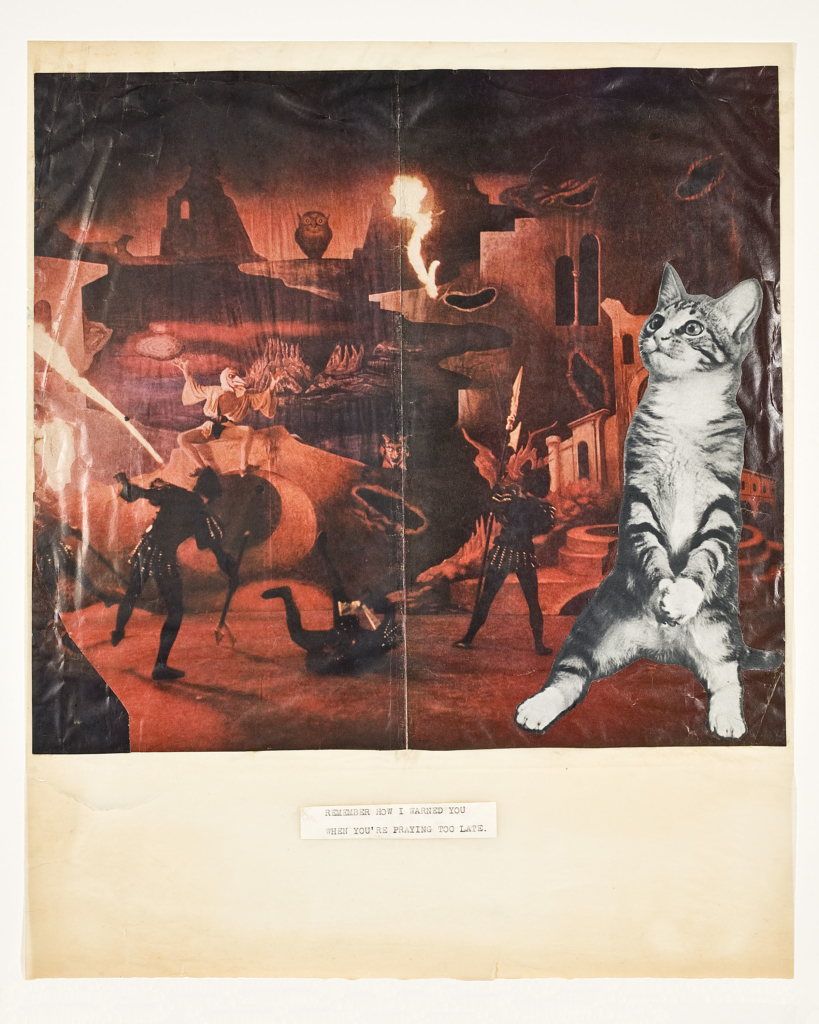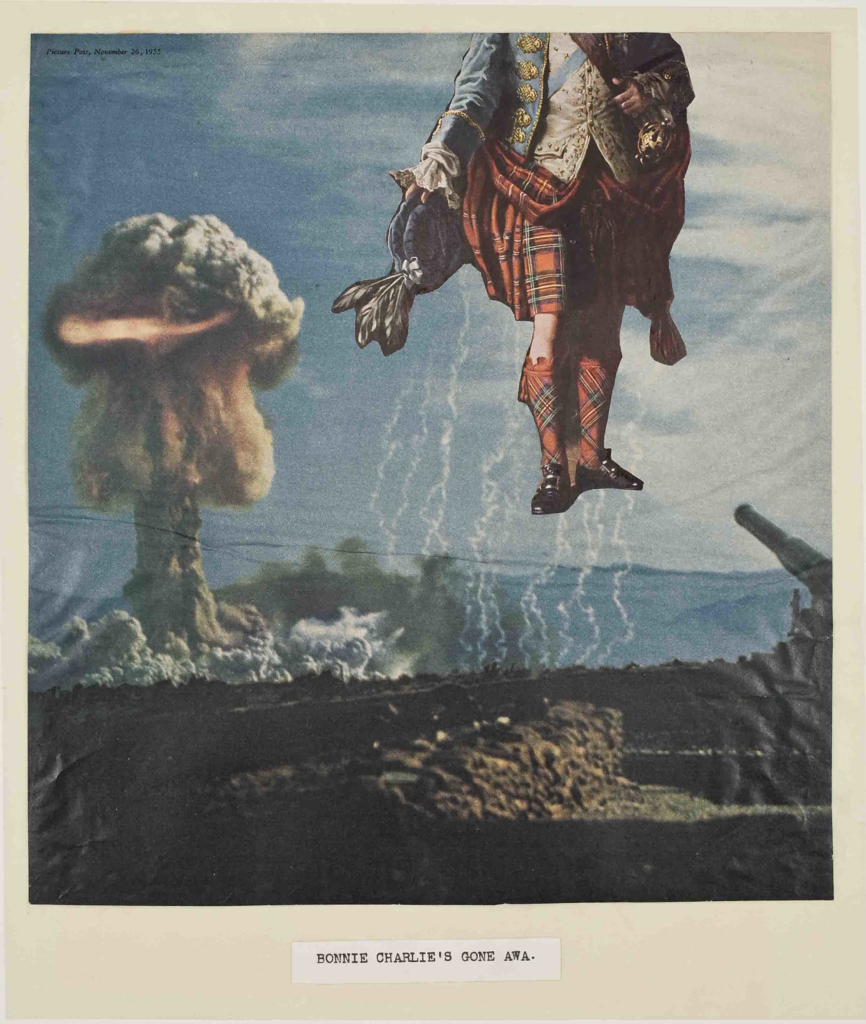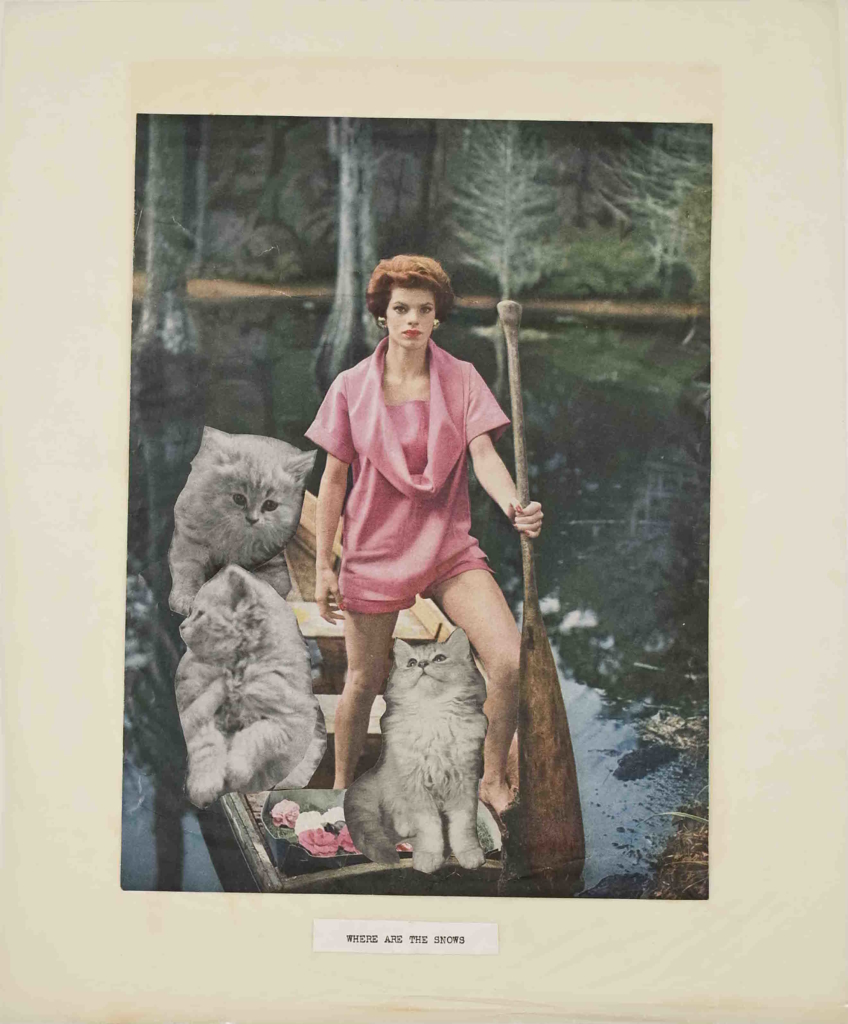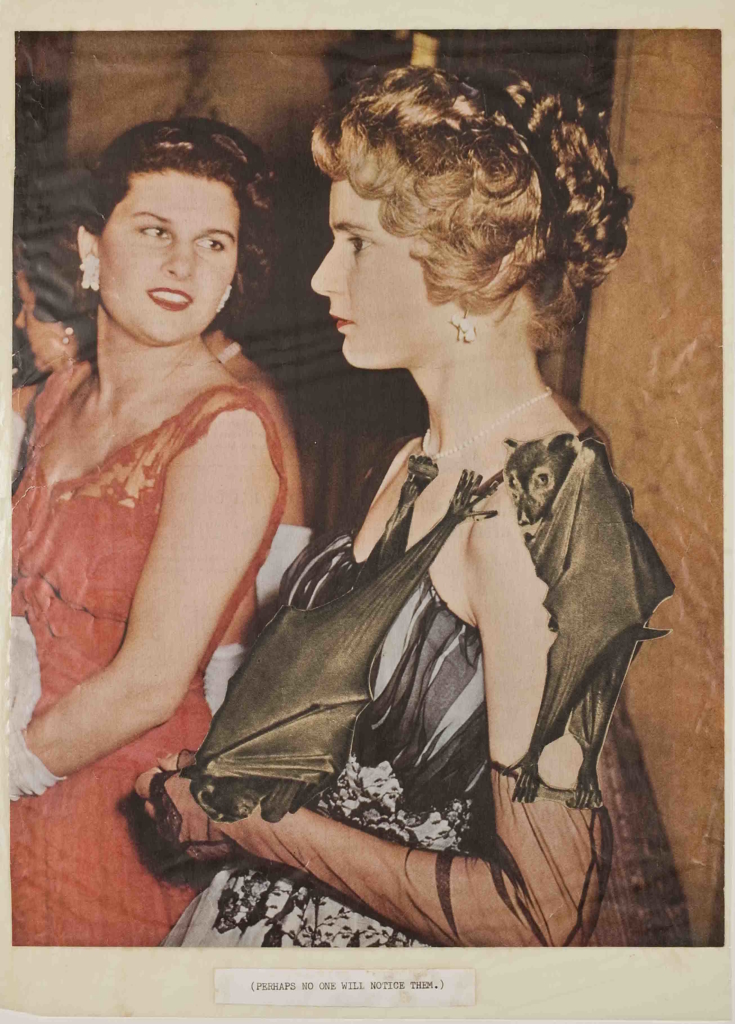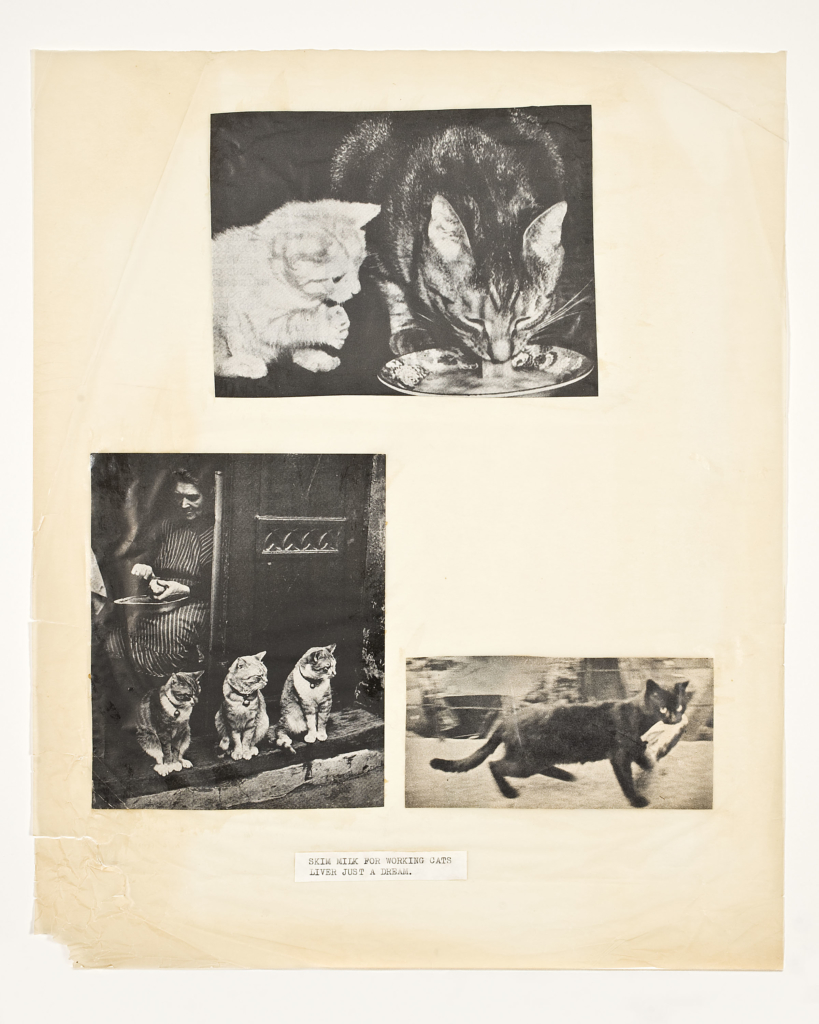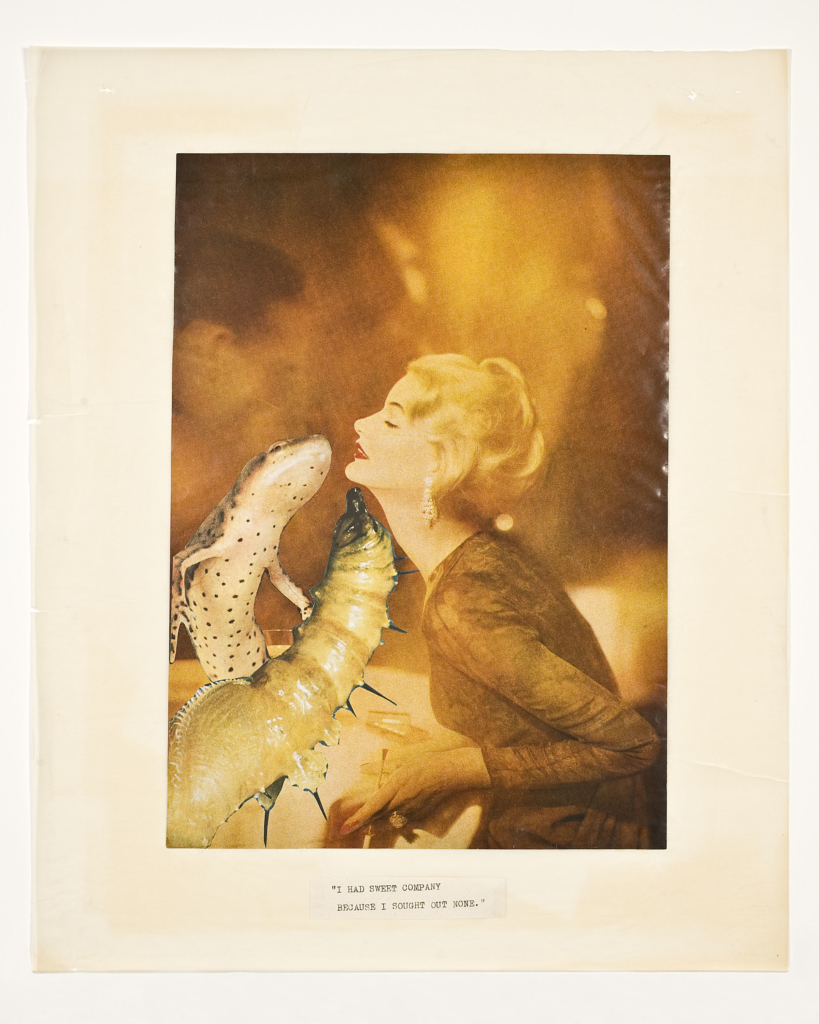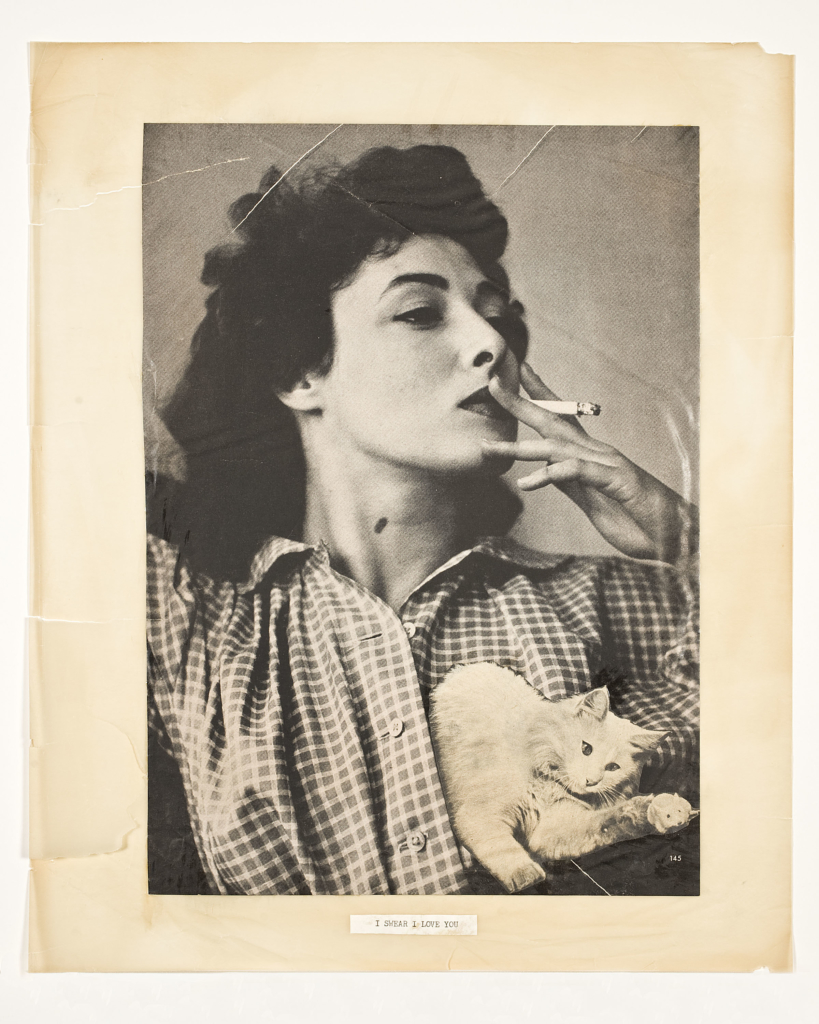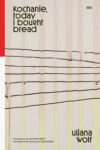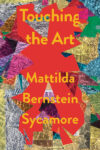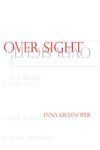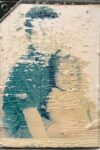“The Collages of Helen Adam” is a forthcoming book from Further Other Book Works, highlighting the collage work of the Scottish poet, collagist, and photographer Helen Adam. Below are some of the collages which will be included in the book, as well as an excerpt from the introduction to the book by Alison Fraser.
“The Weird One”: Helen Adam’s Visual Work
In the late 1970s, Helen Adam wrote to Robert Duncan about “some pleasing weird collages” she had made, noting that her sister was ultimate arbiter of their quality: “I always know they would work if Pat says, ‘No! No! I can’t bear to look at them!’”[i] While Adam is best known for high-spirited performances of her witchy ballads, her substantial portfolio of visual work—which includes hundreds of scrapbooks, collages, and photographs—has been largely overlooked. Yet, as her letter to Duncan suggests, visual expression was a vital aspect of Adam’s creative life and demonstrates that Adam’s poetics were shaped by her close familial relationships as much as by her participation in poetry communities. Helen and Pat lived together their entire lives, shunning marriage for a coven of two, and their radical housekeeping, which included artistic collaboration, reveals that the creative space they curated in their home offered an alternative to the male-dominated arts scene. The resulting visual work recontextualizes Adam’s poetic practice and repositions our attention from her coterie of male peers to the realm of the home and family.
When the Adam sisters arrived in San Francisco from Scotland in the 1950s, they shifted from their childhood practice of scrapbooking and bookmaking to a collaborative collage project—focused on representations of women in the media, witchcraft and magic, and their homeland of Scotland—which became a substantial body of work.
The Adam sisters employ humor as a major strategy in their project, juxtaposing captions from canonical poems with the latest fashion spreads to highlight how they are contradictory and absurd. For instance, in “Where Are the Snows,” they pair a page from Vogue with the well-known refrain from Dante Gabriel Rossetti’s translation of François Villon’s “Ballade des dames du temps jadis,” a poem that laments the passing of famous women from long ago:
Tell me now in what hidden way is
Lady Flora the lovely Roman?
Where’s Hipparchia, and where is Thais,
Neither of them the fairer woman?
Where is Echo, beheld of no man,
Only heard on river and mere,—
She whose beauty was more than human? . . .
But where are the snows of yester-year?[ii]
The poem’s focus is on the death of these women and the loss of beauty in the world; the women’s great deeds are left unmentioned.
Discontented with this message, the Adam sisters deconstruct it in “Where Are the Snows.” In this collage, a barefoot model in a pink romper stands in a wooden canoe while three outsized kittens crowd the boat. Shorn from its original context, the line “But where are the snows of yester-year?” ceases to be a nostalgic lament for beauty as transient and fungible as the snow and instead becomes a serious—and nonsensical—question posed by Vogue. The sisters increase the ridiculousness of the situation by contrasting this query with an absurd solution: Vogue has sent a model into a mangrove swamp to find snow, outfitting her with a hopeless crew of kittens. Through the combination of these disparate elements, the credibility of “Where are the snows”—and by extension the general meaning of the poem and message of the fashion editorial—is dismantled in the collage’s comical rendering.
Taken together, these collages (plus Adam’s photo-collages of San Francisco friends and her ballad-collage In Harpy Land) offer a more complicated picture of Adam’s poetics, politics, and creative impulse. The subversive women found in these collages have an antecedent in the non-normative lifestyle of their creators, who found thriving alternative communities both in the bohemian circles of San Francisco and New York City, and in their home.
[i] Adam is referring to collages she made for her book of short stories, Ghosts and Grinning Shadows: Two Witch Stories (Hanging Loose Press, 1977). Helen Adam to Robert Duncan, Oct. 20, 1978?, Robert Duncan Collection, The Poetry Collection of the University Libraries, University at Buffalo, The State University of New York.
[ii] François Villon. “Ballad of Dead Ladies.” Trans. Dante Gabriel Rossetti. Dante Gabriel Rossetti: An Anthology. Ed. E.L. Lucas. New York: Cambridge University Press, 2014. 148-149.
All images copyright © the Poetry Collection of the University Libraries, University at Buffalo, The State University of New York.
This post may contain affiliate links.



